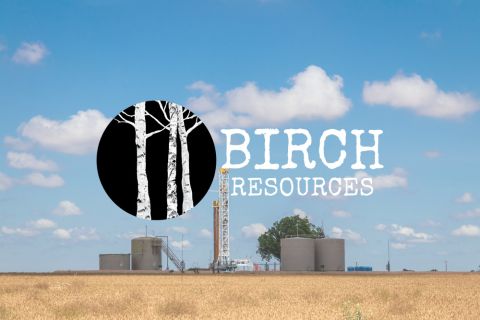
NEW YORK – “Every panelist at this conference has touched on energy delivery: clearly the power sector is betting big on supply,” said Teri Viswanath, managing director of natural gas with S&P Global Platts in her opening remarks for the midstream panel at the recent S&P Global Market Intelligence Power & Gas M&A Symposium. That observation was particularly astute because many of the panelists and speakers were from outside the midstream, from utilities to manufacturers.
Viswanath’s insight was that the oil and gas industry in general, and the midstream in particular, have been successful in convincing the rest of corporate America and the world that hydrocarbons are plentiful and relatively inexpensive. Indeed they may have been too successful in that public information campaign because the conversation seems to have shifted past security of supply. That leaves the midstream with an obligation but not necessarily the wherewithal.
“The collapse of oil and gas prices starting in late 2014, and the steep decline in midstream investment that followed have given us a better understanding of the risks in the midstream,” noted Viswanath. “But now that we are seeing a comeback, at least in oil prices, we are not seeing midstream investment keep pace with upstream investment.”
From an end-use operating perspective, that is surprising, said Michael Miller, CEO of Quantum Utility Generation, “because a competitive merchant market for power means a convergence of gas and power markets. The cost of energy can be the determining factor for power generation.”
Jason Satsky, co-head of power, utilities, and energy infrastructure investment banking at Bank of America Merrill Lynch, suggested that the there has been a decoupling of midstream, particularly MLPs and that those investments are now lagging more direct commodity investments.
“The headwind for midstream investment is the question: where is the next play?” said Satsky. “The Permian is known; the Scoop and Stack are known. There are no clear answers in the Marcellus and Utica. The fundamentals indicate a positive vector for the midstream sector—absent any exogenous geopolitical risks. But we have not seen the money come back into the sector yet. I am hopeful the recovery will accelerate and that we will start to see those inflows in the next few quarters.”
With an eye on steel in the ground, Aaron Blomquist, managing director at Tudor Pickering Holt & Co., noted, “the midstream did a good job in that decoupling,” but now a little lift from the upstream glow would not hurt.
“The midstream was overbuilt,” Blomquist added. “Lately we have seen a re-rating of the sector in a lower volume growth environment. Balance sheets have improved, but there is still less dividend growth. That at a time when investors want yield. Also, investors are fickle, so midstream’s access to capital has changed even as the competition for capital has increased. Still, I believe we are going to see dollars flowing back into the midstream.”
Specifically, Blomquist said midstream MLPs used to have a leverage rate of about four times EBITDA, and that has decreased to about three times. “Historically MLPs also had 100% payout, but now they are retaining more cash flow because the capital markets are not as available.”
Miller added, “long-term commitments are needed to put pipe where molecules were being found. Midstream companies are not designed to take big merchant market bets.”
Blomquist remarked on another reversal.
“It used to be that the financials would not participate in a midstream deal if the strategics were in because the financials could not compete. Now it’s the opposite. The strategics are shying away because they look at the last few big deals and they were all driven by financials.”
The panel agreed that good projects can get funding.
“If you look like a toll road,” said Statsky at Merrill, “you have better access to the low-cost bucket of pension fund capital.”
Recommended Reading
VTX Energy Quickly Ramps to 42,000 bbl/d in Southern Delaware Basin
2024-09-24 - VTX Energy’s founder was previously among the leadership that built and sold an adjacent southern Delaware operator, Brigham Resources, for $2.6 billion.
Hot Permian Pie: Birch’s Scorching New Dean Wells in Dawson County
2024-10-15 - Birch Resources is continuing its big-oil-well streak in the Dean formation in southern Dawson County with two new wells IP’ing up to 2,768 bbl/d.
Coterra Takes Harkey Sand ‘Row’ Show on the Road
2024-11-20 - With success to date in Harkey sandstone overlying the Wolfcamp, the company aims to make mega-DSUs in New Mexico with the 49,000-net-acre bolt-on of adjacent sections.
Matador’s U-lateral Delaware Tests Outproduce 2-mile Straight Holes
2024-10-30 - Matador Resources' results from eight Loving County, Texas, tests include two 2-mile U-turn laterals, five 2-mile straight laterals and one 1-mile straight lateral, according to state data.
Comstock: Monster Western Haynesville Wildcats Cost $30MM-plus
2024-10-31 - Comstock Resources is flowing back a 13th well currently in the play where the oldest has made 2.2 Bcf per 1,000 lateral feet to date in its first 29 months online.
Comments
Add new comment
This conversation is moderated according to Hart Energy community rules. Please read the rules before joining the discussion. If you’re experiencing any technical problems, please contact our customer care team.






